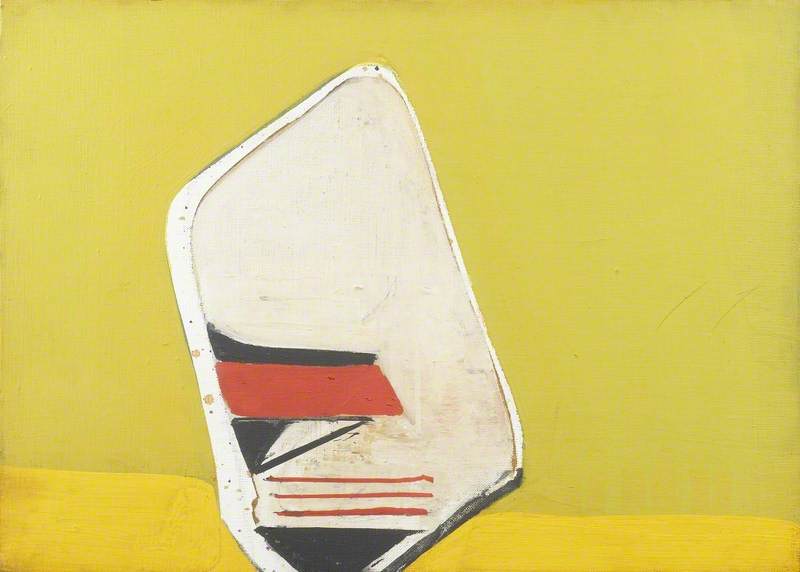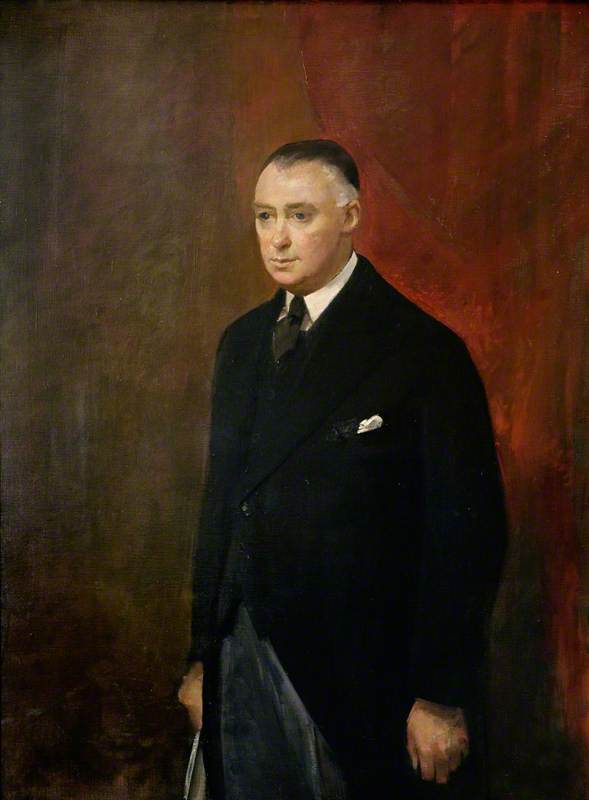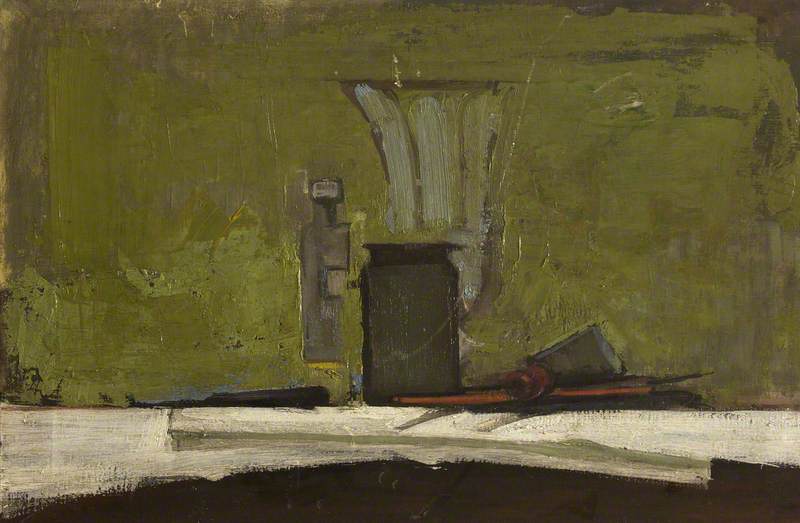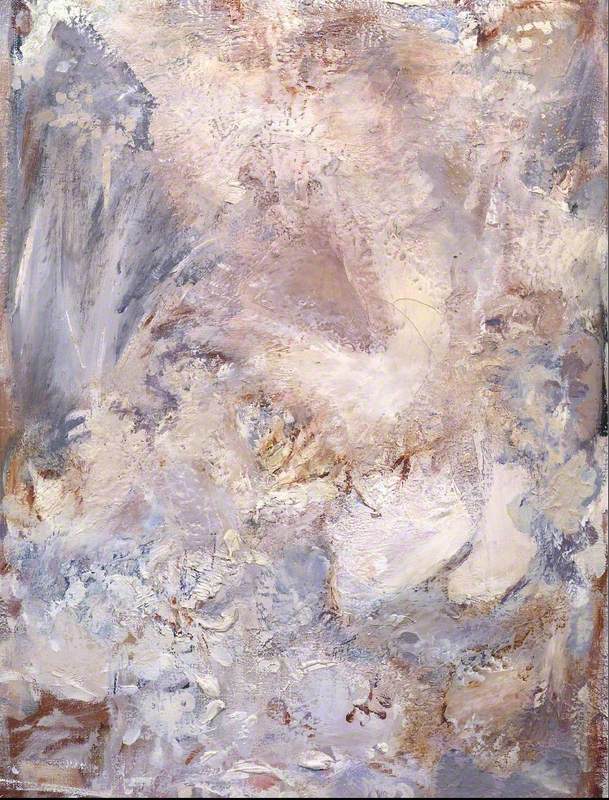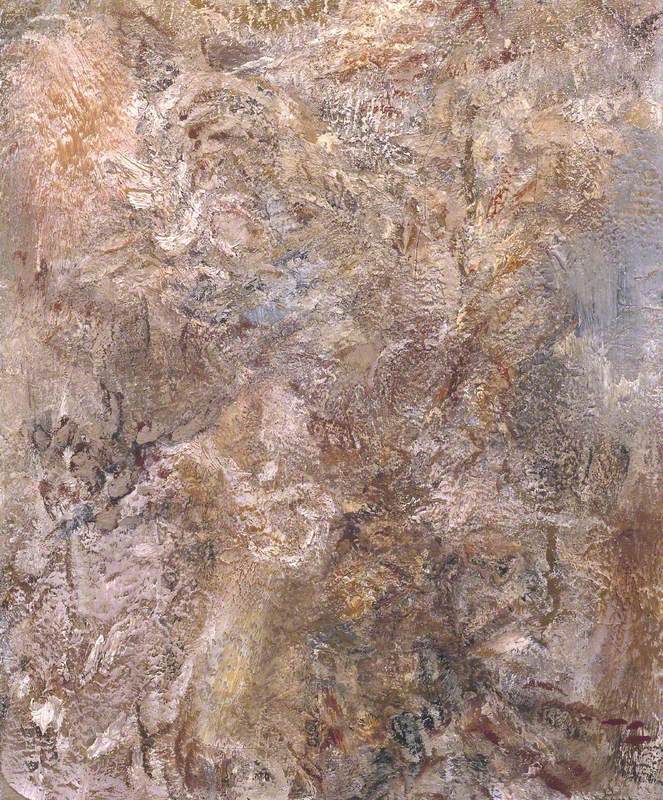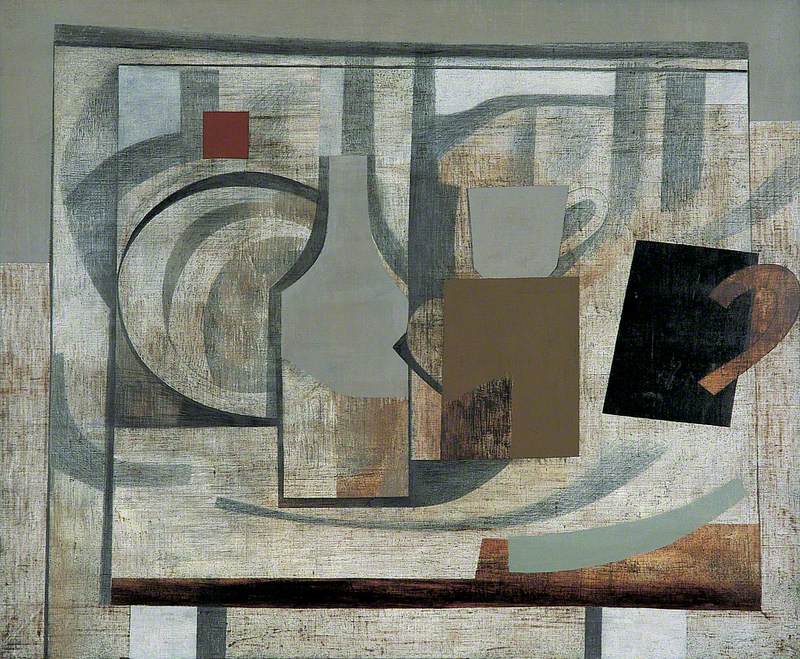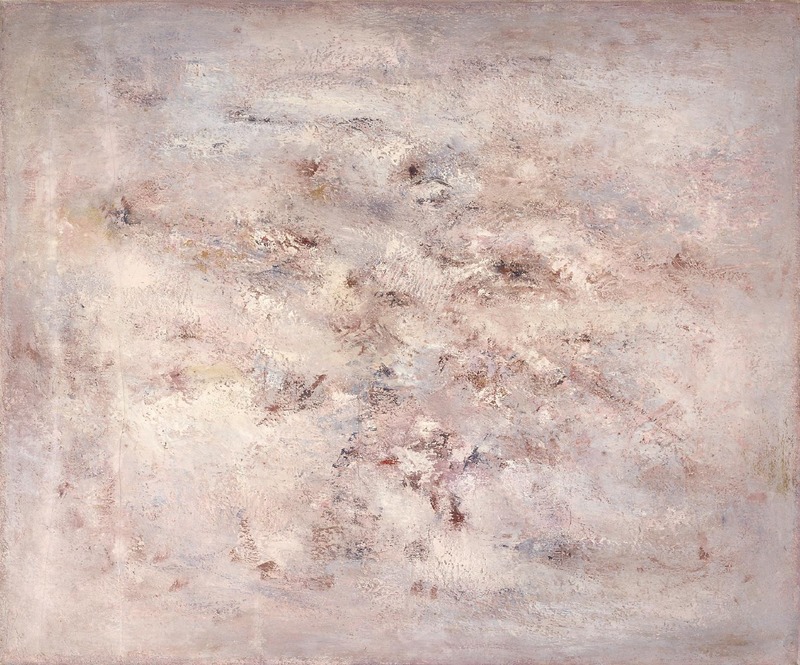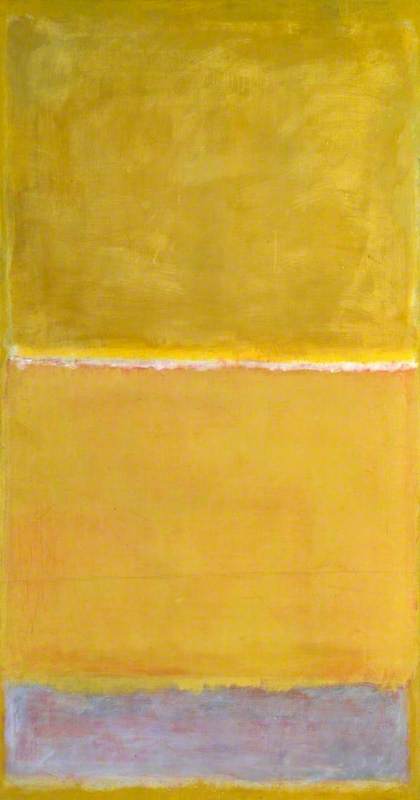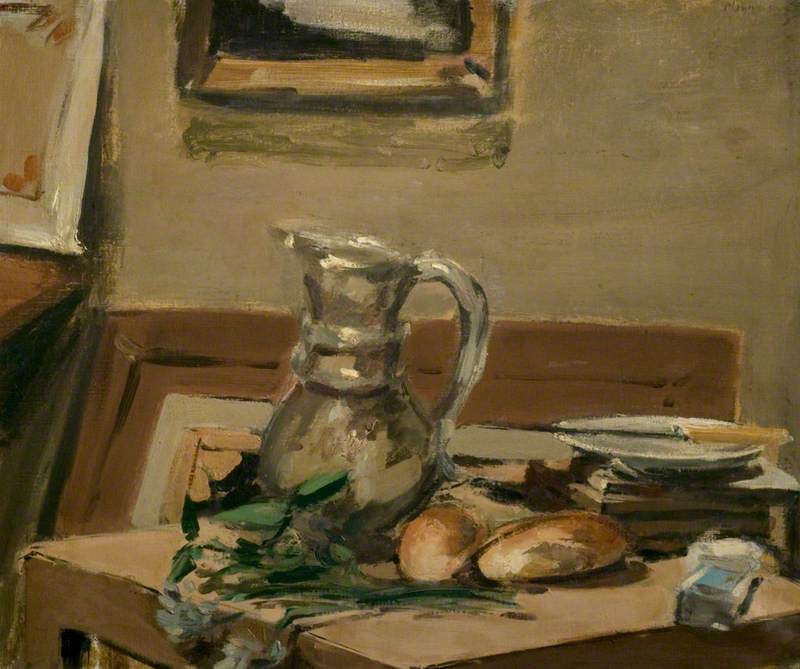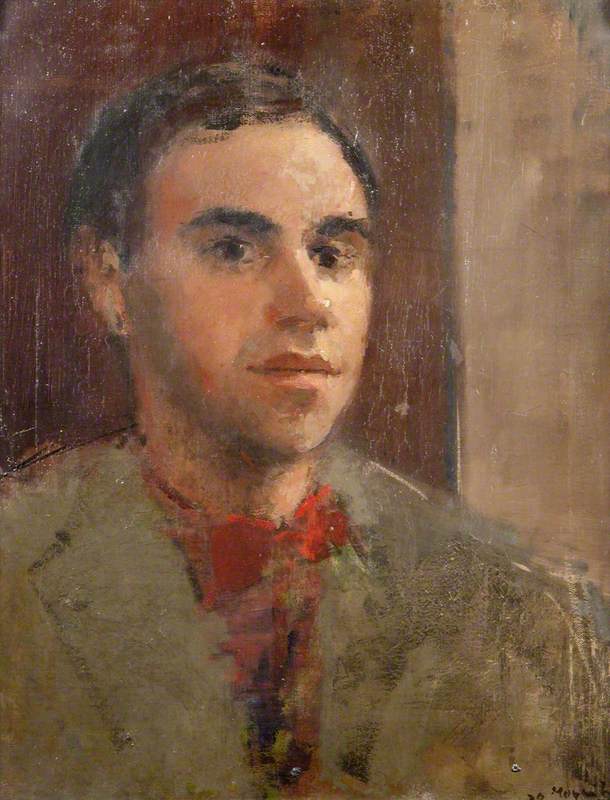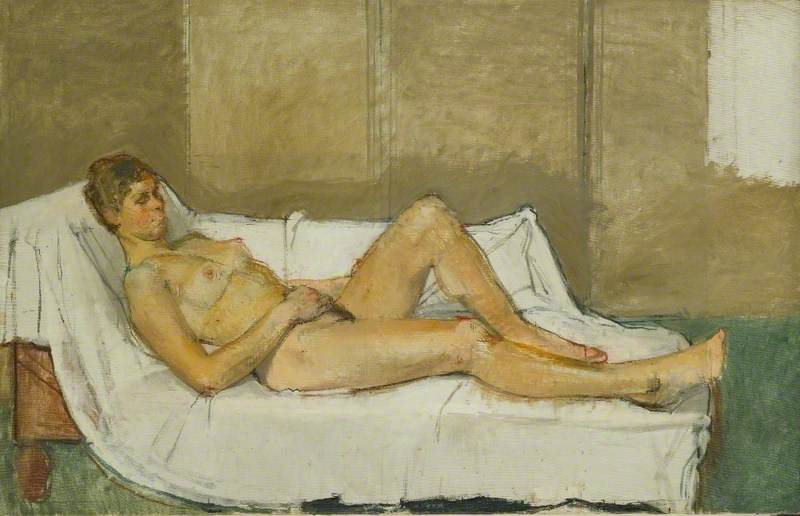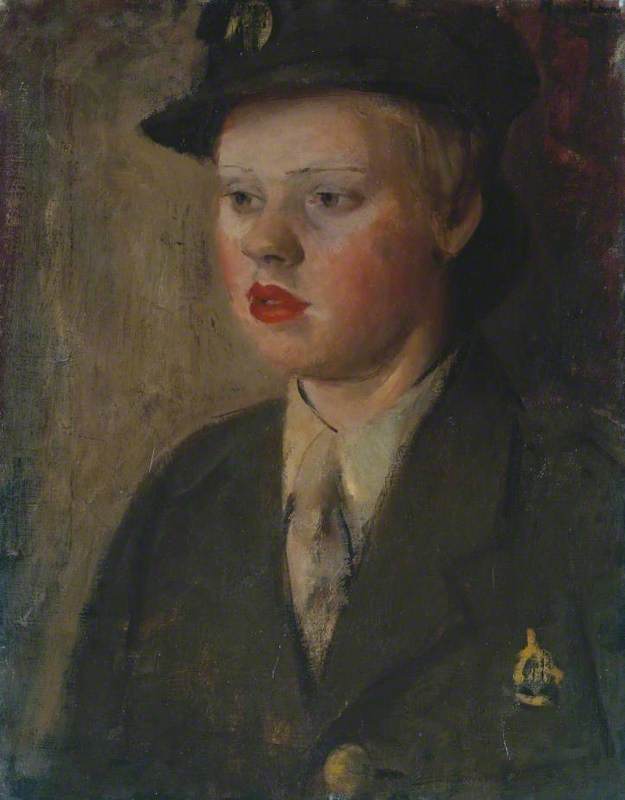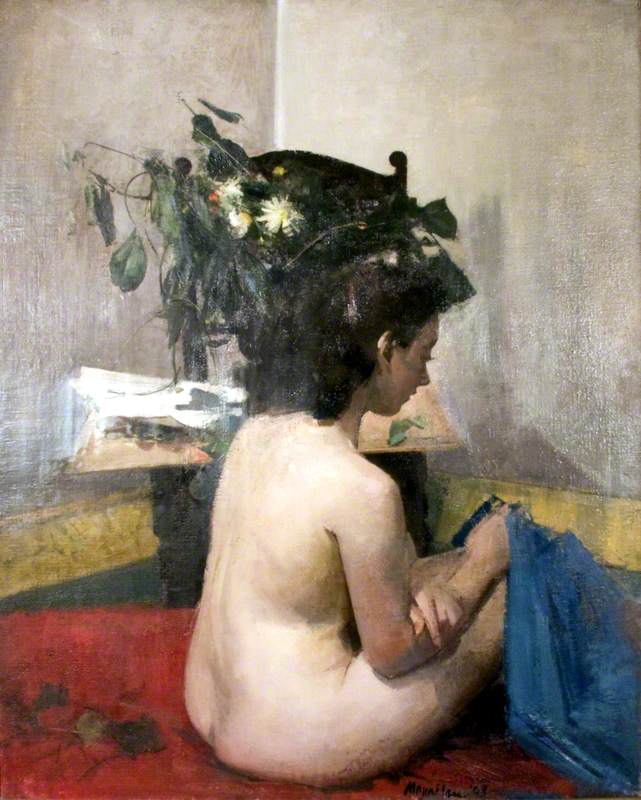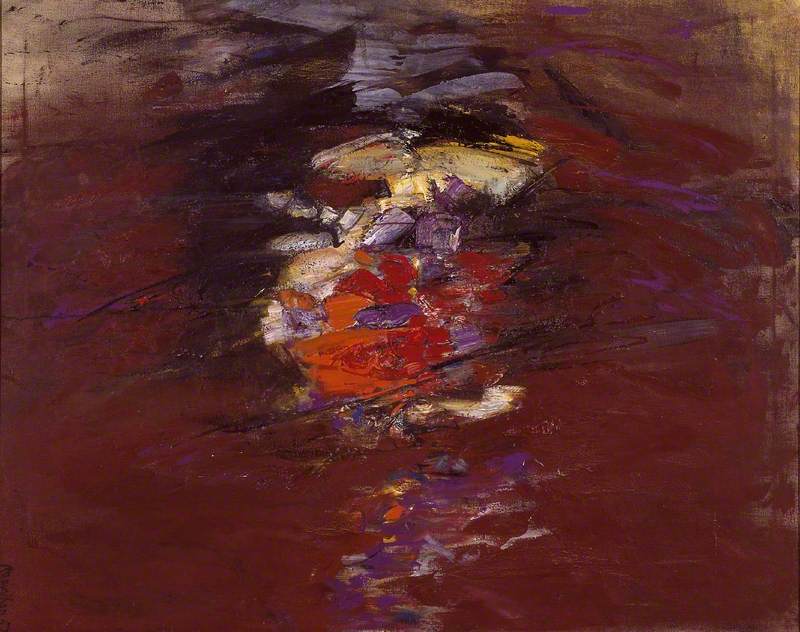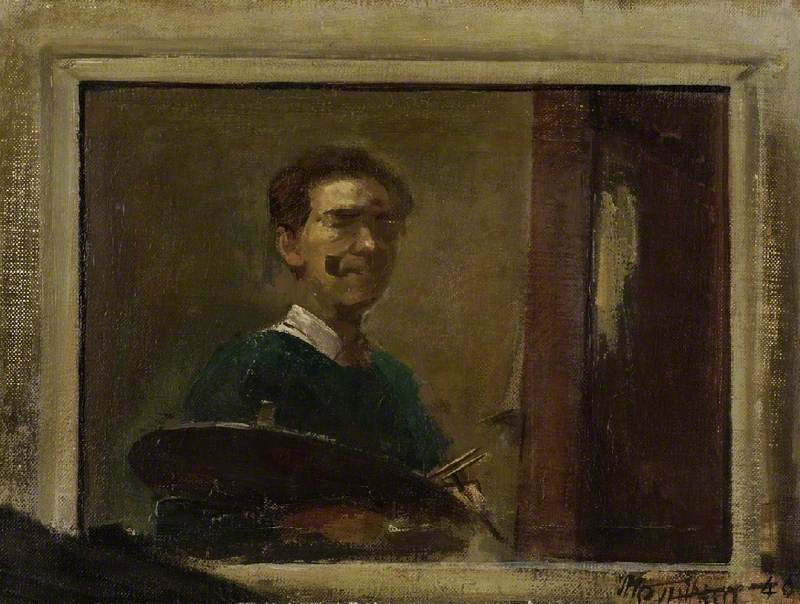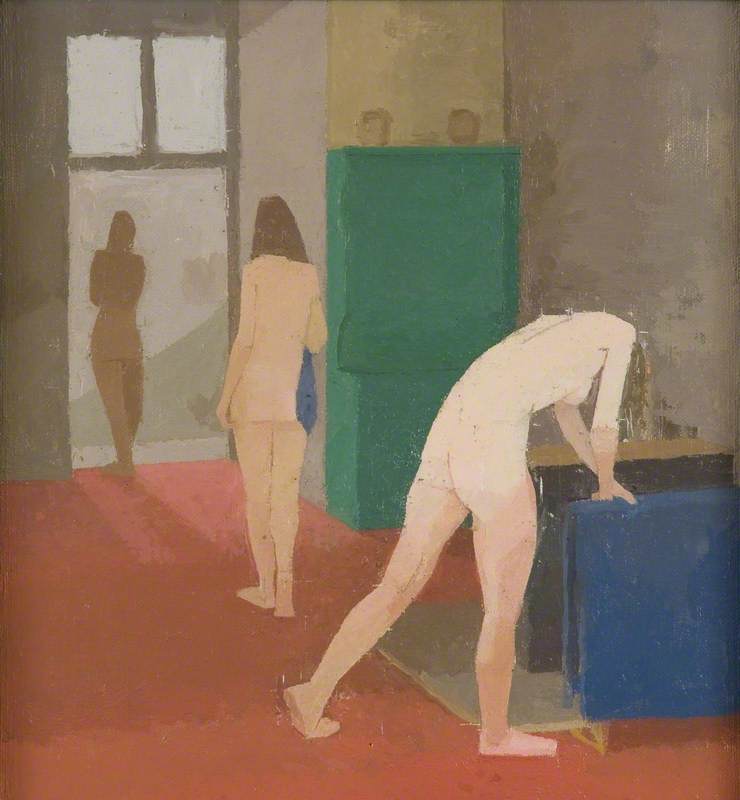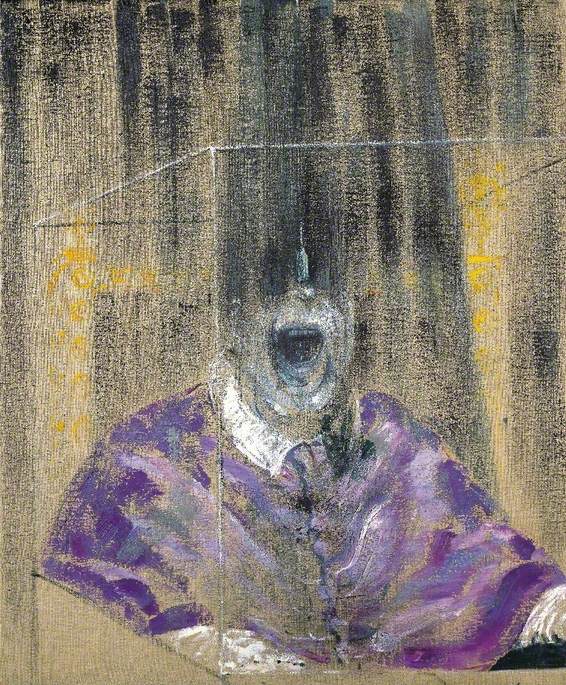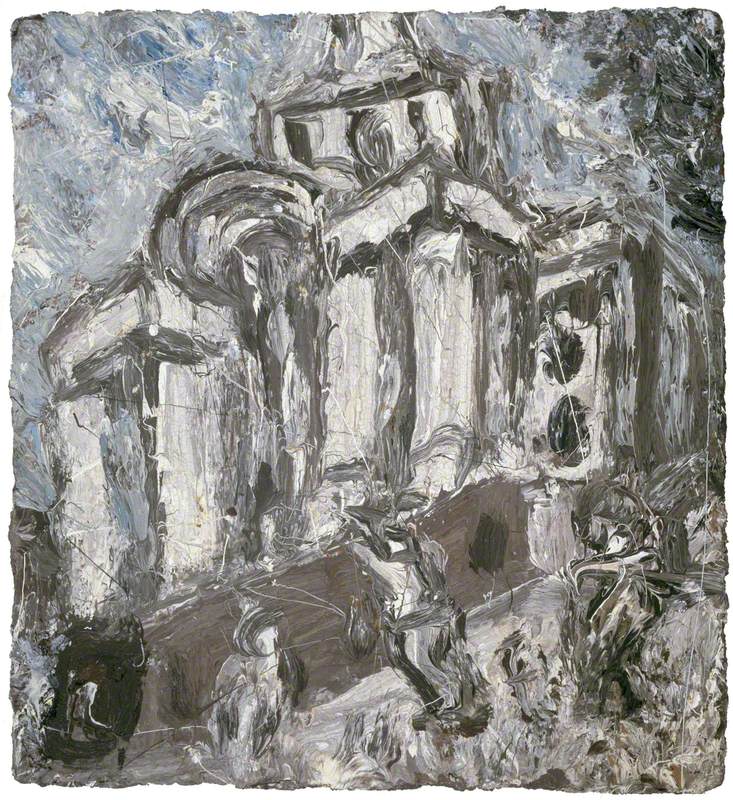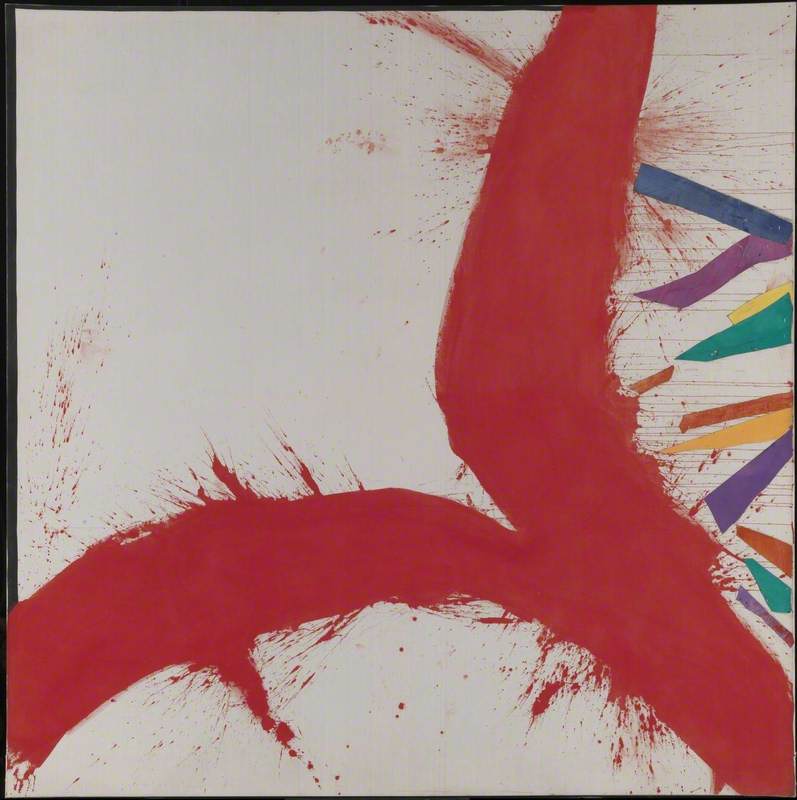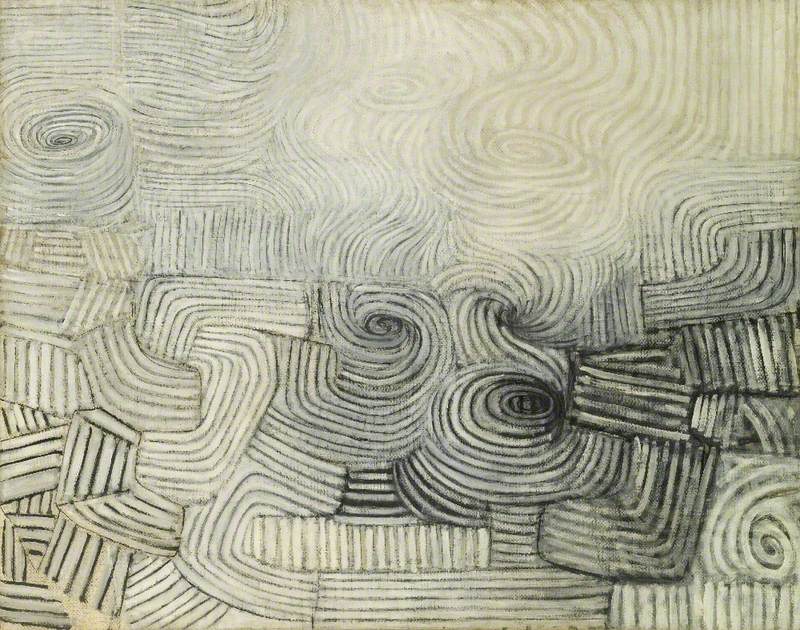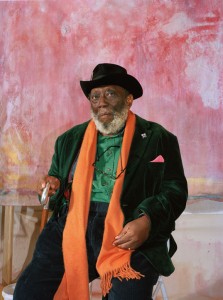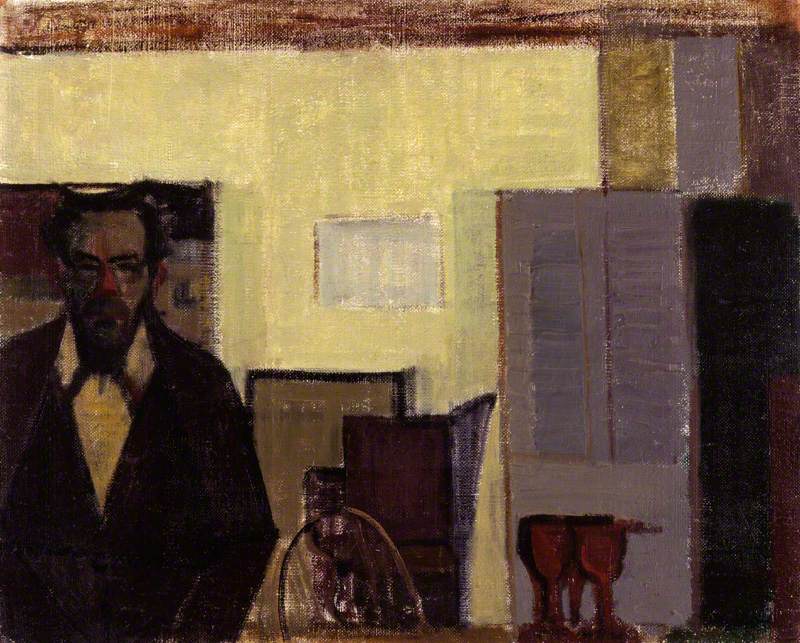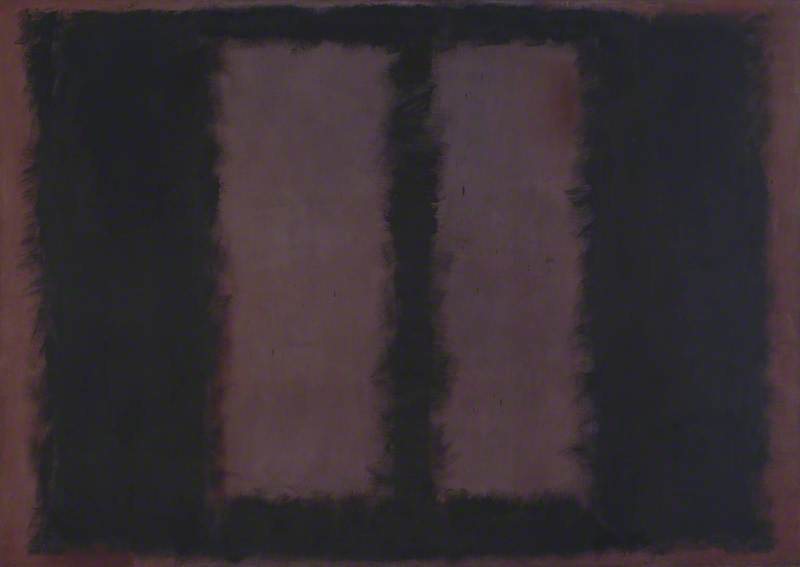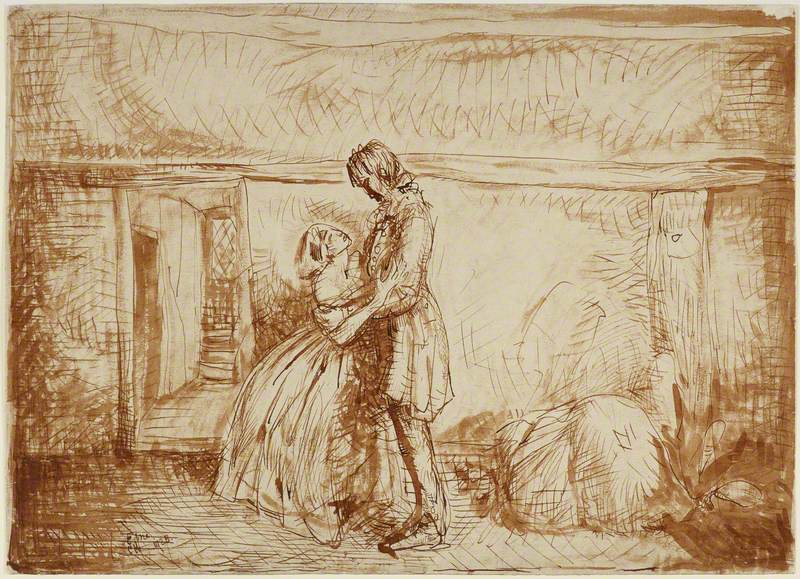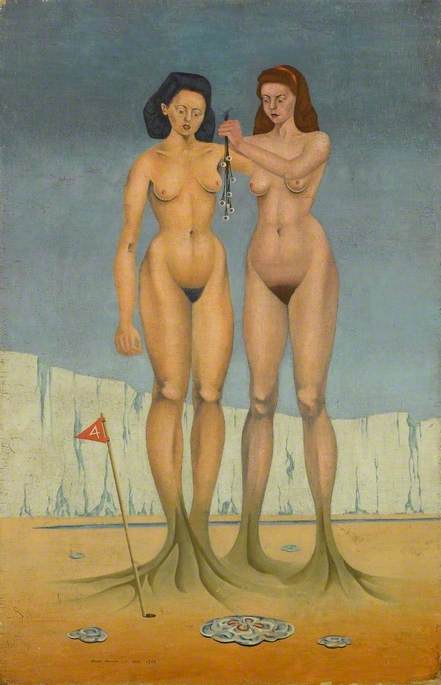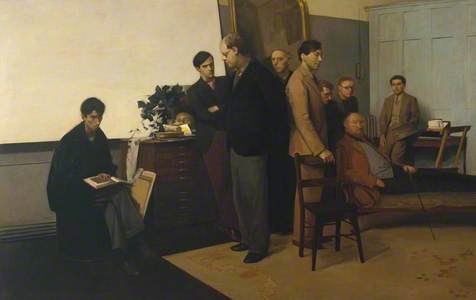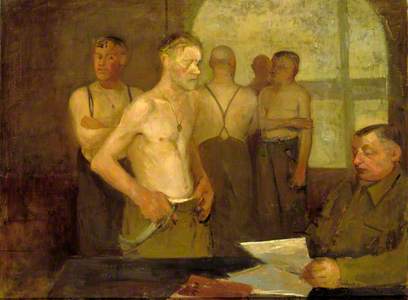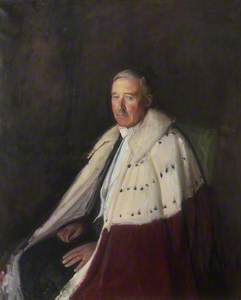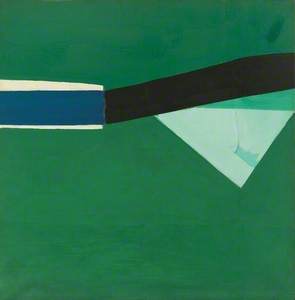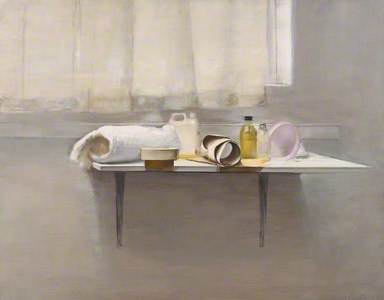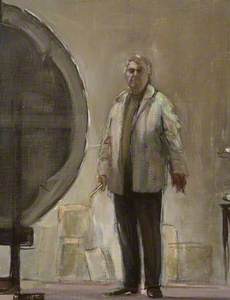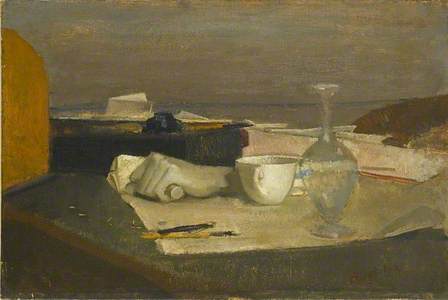In the Tate collection, there is a grey and unassuming abstract canvas, titled Objective Abstraction (1935–1936). Its surface crumbles with chalky white and earth-tone paint, applied in gestural sweeps and dabs. It is a painting about paint itself – its texture and expressive potential – years before American Abstract Expressionist artists took on this same challenge.
Another work in the same collection, Portrait Group (1951), painstakingly depicts the Royal College of Art (RCA) teaching staff.
At first glance, these two paintings seem to have little in common: Objective Abstraction is abstract, spontaneous, and expressive, while the RCA portrait is figurative, closely observed, and academic. Yet both paintings were made by the same artist. Together, they reveal strikingly different sides of the painter, Rodrigo Moynihan (1910–1990).
While his name is little heard today, Moynihan was once a central figure in the twentieth-century British art world. Although he was born in Tenerife, Moynihan's family moved to London when he was eight, before settling in Wisconsin. A winter in Rome during 1927–1928 inspired him to pursue art. He enrolled at the Slade School of Art that year, becoming a fixture on the London art scene.
His paintings are now scattered across UK collections, encompassing varied genres and subjects, from the figurative to the abstract. Yet, for all their variety, they remain united by common themes. Above all, Moynihan's paintings train attention on the medium of paint and reveal his lifelong pursuit of a truly objective style.
Moynihan's early abstractions from the 1930s encapsulate this drive to uncover paint's most unmediated form. Against the prevailing taste for tidy, linear abstract works, epitomised by Ben Nicholson (1894–1982), Moynihan pursued a more painterly and spontaneous form of abstraction.
He looked to the past for inspiration, striving to capture something of Monet's treatment of Rouen Cathedral, which he described in an interview with critic David Sylvester as a 'haze of marks', or the swirling brushwork of late Turner – then deeply unfashionable painters. For Moynihan, this treatment of paint became an end in itself. As he later put it, 'the thickness of the paint seemed to squeeze out the object.'
Rouen Cathedral: Setting Sun (Symphony in Pink and Grey)
1892–1894
Claude Monet (1840–1926) 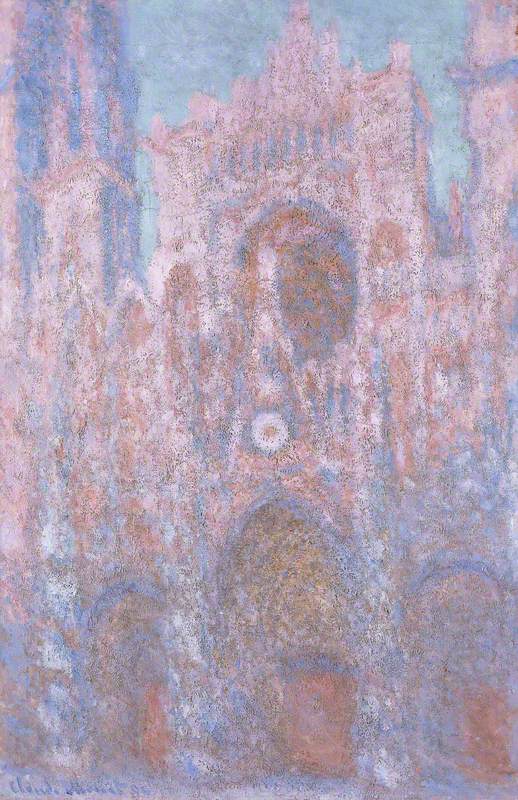
Moynihan pursued this style from 1933 to 1936, alongside artist Geoffrey Tibble (1909–1952), his friend since their days studying together at the Slade, and other artists. They termed the movement 'Objective Abstraction'. For them, 'objectivity' meant dispelling preconceived notions of how their works should look. They were not the only artists seeking to work spontaneously at this time: the Surrealists were also experimenting in automatic drawing in the early twentieth century. While others explored more linear styles, however, Objective Abstraction placed paint at its centre, exploring its effects, emotions, and limits.
The movement enjoyed little critical or commercial success in the 1930s. Yet these works have since been recognised as a precursor to American Abstract Expressionism: prescient suggestions of the canvas-covering painted surfaces that would dominate art by the mid-century.
For Moynihan, however, painting from life could be just as free and revealing as his abstractions: 'it seemed to me that the object must be simply looked at in a dispassionate way, and the results would be almost as unpremeditated as in the abstract paintings...' Shifting between figuration and abstraction throughout his life, Moynihan pursued an unfiltered form of painting, free of formulas or clichés. While following his own aims, however, his changes of style were also guided by the broader contours of history.
By the late 1930s, the Spanish Civil War, threat of global war, the use of art as propaganda or protest, and the rise of avant-garde styles had galvanised the art world. One response was to reject the modernist inventions of the continent, instead seeking to paint from life as truthfully as possible – to pursue an accessible style that might unite the public, in the face of the divisive inventions of avant-garde Europe.
This strategy was taken up by William Coldstream (1908–1987), Victor Pasmore (1908–1998), and Claude Rogers (1907–1979) at their school of painting, later known as the Euston Road School. Moynihan, on the fringes of this realist movement, shared their commitment to objective depiction, and often worked in their studio. Yet he maintained his preference for a richer palette and more painterly style, inspired by the Old Masters, over the linear style and muted tones of Coldstream.
Moynihan's turn towards figuration in the late 1930s marked the beginning of a roughly 15-year period as a successful portrait painter. Capturing the faces of the military as an official war artist, and later those of industrialists and generals in sombre tones, he gained recognition as a painter 'who could do a boardroom portrait which was also a work of art'. In 1946, an invitation to paint Princess Elizabeth cemented his reputation as an establishment painter.
On the strength of these works, Moynihan was elected a Royal Academy Associate in 1944 (becoming a full member in 1954) and Professor of Painting at the Royal College of Art (RCA) in 1948 – a position which he immortalised in the RCA staff portrait. At the RCA, he taught an extraordinarily talented cohort of artists, including Leon Kossoff (1926–2019) and Peter Blake (b.1932). While Moynihan's name is overshadowed by those of his students and colleagues today, he was once as well-known a painter in London as any of his contemporaries, and a fixture in bohemian Soho nightlife, alongside his friend Francis Bacon (1909–1992). Moynihan's portraits from this period are a vital historical document: a who's who of post-war society.
Howard Morley Robertson (1888–1963), PRIBA, MC, RA, RGM
c.1954
Rodrigo Moynihan (1910–1990) 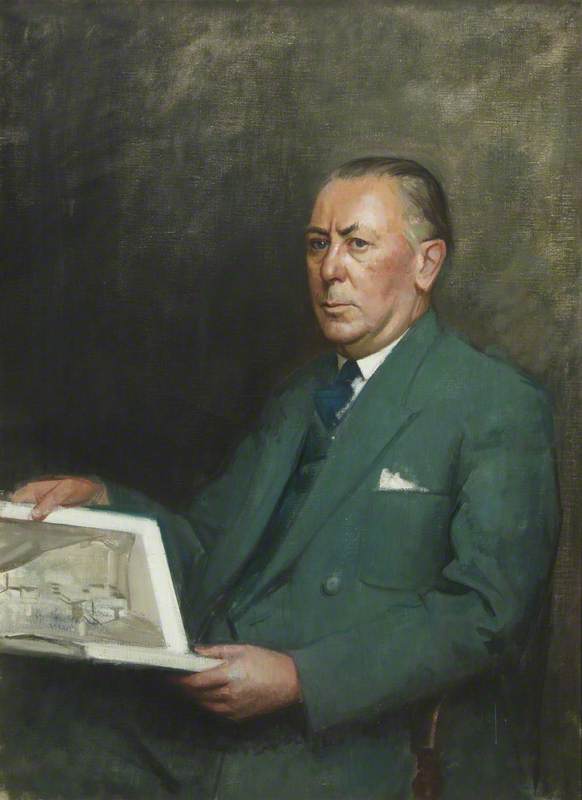
The 7th Earl of Radnor (1895–1968), Chairman of the RSA Council
1954
Rodrigo Moynihan (1910–1990) 
Yet Moynihan would later describe working on his commissioned portraits, 'I can't say I enjoyed painting a lot of them, and a lot of them were… a terrible strain'. His sober official works from this period contrast with his vibrant uncommissioned still lifes and portraits, often swimming with rich primary colours.
It is perhaps unsurprising, then, that Moynihan rebelled against academic painting, reprising abstract painting from 1955. Stepping down from the academy in 1958, and settling in the south of France with his second wife, his canvases drew on the surrounding landscape, crystallising its forms into flurries of brushwork and bold colour. This marked his second, brighter and more expressive abstract period, which would last and develop into the 1970s.
Even in his late career, Moynihan continued to reinvent his practice. His studio surroundings became his subject, as he depicted the hypnotic, accidental clusters of objects that accrued around him. Unburdened by the artifice of posed still lifes, these works captured objects as he found them, exploring the visual dialogue between the random and the ordered. Worked in soft greys and pale tones, typically in horizontal formats, these works resemble the colour bands of his abstract paintings. Moynihan had found a new kind of automatic painting – one which would become a signature genre.
Moynihan's restless reinvention is perhaps best captured by his self-portraits. Painted throughout his life they present many versions of the artist, from his early flamboyant artistic persona to starkly observed yet quietly confident old age. Approaching his own appearance as if for the first time in each work, these portraits encapsulate his rejection of formulaic painting, and the pursuit of objectivity that drove his work.
This variety has made Moynihan difficult to categorise. Largely written out of twentieth-century art history, his work often diverged from, or rested on the fringes of, many major modern movements.
Yet, sharing motivations with artists in his orbit, from Tibble to the Euston Road School, today Moynihan's oeuvre acts as a microcosm of twentieth-century British art and society, seen through his own particular lens. Moynihan's historically and artistically revealing body of work remains well worth rediscovering.
Alice Blow, art researcher and writer
This content was supported by Jerwood Foundation
Further reading
Lawrence Gowing, Rodrigo Moynihan: A Retrospective Exhibition, Royal Academy of Arts, 1978
John Moynihan, Restless Lives: The Bohemian World of Rodrigo and Elinor Moynihan, Sansom & Company, 2002
John Russell, Rodrigo Moynihan: Paintings 1970–1973, Fischer Fine Art Limited, 1973
Richard Shone, Rodrigo Moynihan: Paintings and Works on Paper, Thames & Hudson, 1988

